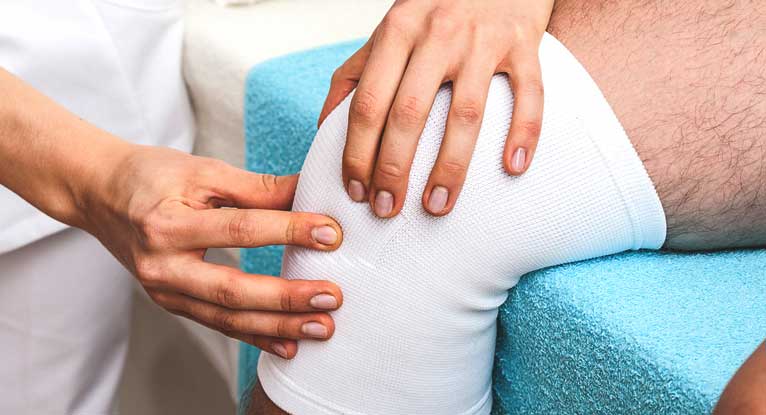Arthritis is a common disease among older people, and women are more likely to get it than men.
Symptoms of arthritis include joint pain, stiffness, chronic pain, redness, and swelling. Arthritis can occur in most joints in the body but is most common in the shoulder, hip, spine, and knee joints. When it is cold, the inflamed joints become painful again, so severe that many people could not stand it.
So how to reduce joint pain when it’s cold? Based on the advice of the medical professionals from https://thoatvidiadem.net, we would like to share some of the following information.
Now, let’s find out through this article.
The Impact of Cold Weather on Bones and Joints
The cold damages bone and cartilage cells, causing symptoms of arthritis to flare up. The cold weather is accompanied by increased humidity due to drizzle, which causes the muscles of the muscles to contract, the joint fluid to become thicker, which makes the joints hard, tired, and difficult to move. The body becomes more sensitive during the cold season due to nerve stimulation.
In the weather condition like so, people afraid of exercising and physical activities. Most people with arthritis experience flare-ups in the winter due to less activity that leads to stiffness and makes the pain worse when walking.
Common Types of Arthritis
Osteoarthritis: Occurs when the tissues that cushion the joints between the bones have degenerated continuously. Without this lining, bones would swell and cause pain when exercising.
Rheumatoid arthritis: The immune system attacks and kills body cells, causing the tissue between joints to swell. Rheumatoid arthritis significantly reduces the body’s flexibility and over time, will erode bones.
Gout: Caused by uric acid deposited in joints. Urate salt crystals deposited in many joints and different parts of the body, causing a lot of pain for patients and limiting movement.
How to Reduce Joint Pain When It Is Cold?
Keep the body warm
Proper joint protection to insulate during the cold season can help prevent pain over the long term. Warm scarves, gloves, socks, and clothes help keep your body warm and prevent joints from stiffening due to cold.
The knee is not provided with enough heat because it lacks the protection of muscle and fat and needs to be kept warm. Older people should not let their knees get wet in the winter. Remember to wear tall, thick socks or warm pants to keep your pillow warm when it’s cold.
Exercise regularly
Exercise and staying active are also essential during the cold season, especially for people with arthritis. Regular exercise helps relieve pain and prevent stiffness. The most suitable form of exercise is walking and yoga. Besides, you should massage the joints daily to warm them up.
You can stroll for about 30 minutes a day and can be divided into several times a day to create flexibility for the joints, and it will help avoid stiffness and also reduce pain.
Have a healthy diet
Proper diet plays a significant role in the treatment, helping to reduce the symptoms of arthritis. Patients should pay attention to adequate protein and vitamins, especially vitamins C and D.
You need to eat a lot of calcium-containing foods like milk, legumes. Dairy and soy products contain lots of calcium that helps protect skeletal muscle and prevent arthritis. Foods containing omega-3 like salmon and nuts, leafy greens, or kale help improve symptoms of arthritis.
You should limit eating high-fat foods, frozen foods, seafood, and products that are too sour or too salty (peanuts, white wine, root vegetables, eggs, salted fish). Eat healthy meals and exercise regularly to reduce the pain and symptoms associated with arthritis.
Being overweight or too heavy puts too much pressure on the knees and hip joints, increasing the risk of arthritis. So you need to eat sensibly to keep the body from being overweight.
Do not abuse pain medications
You need to pay attention not to abuse emergency painkillers to improve knee pain. Taking pain relievers is not a way to improve knee pain effectively and safely for patients. The sedatives that patients often buy at drug stores are usually only temporary.
Therefore, the drug does not help restore joint damage, nor does it enhance cartilage regeneration to help strengthen the knee joint. Meanwhile, the drug also causes many dangerous side effects such as pain, stomach ulcers, increased risk of heart attack, and stroke.
Instead, you may want to consider safer treatments or medications. You can refer to medicines to help treat arthritis at thoatvidiadem.net. This pharmacy provides An Cot Nam remedy, which is made from traditional herbal remedies combined with the quintessence of traditional medicine.
When there are signs of arthritis, it is essential to see a doctor for diagnosis and treatment. You should talk to a doctor and a physical therapist. There are many different types of arthritis, and each requires different treatments. Your doctor may prescribe it as needed, with medicines to help you deal with the pain.
You also need to pay more attention to protect the bones and joints more on cold days to ensure the disease does not become more serious. Hopefully, the article has helped you know more ways to protect your joints better. If you know of any other remedies that might benefit your joints, let us know in the comments.

1 comment
Great article, thank you! Too often people don’t do the basics to solve their pain. I created the ultimate checklist at https://solvehippain.com/home/ that can help. Just thought I’d share if anyone’s interest.
Comments are closed.